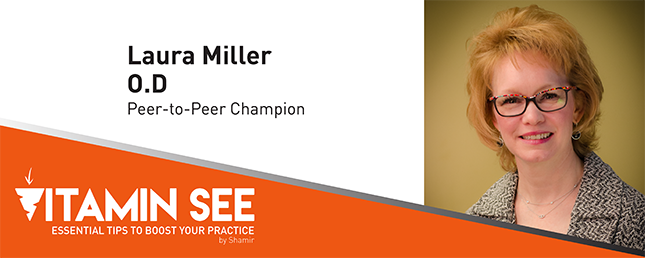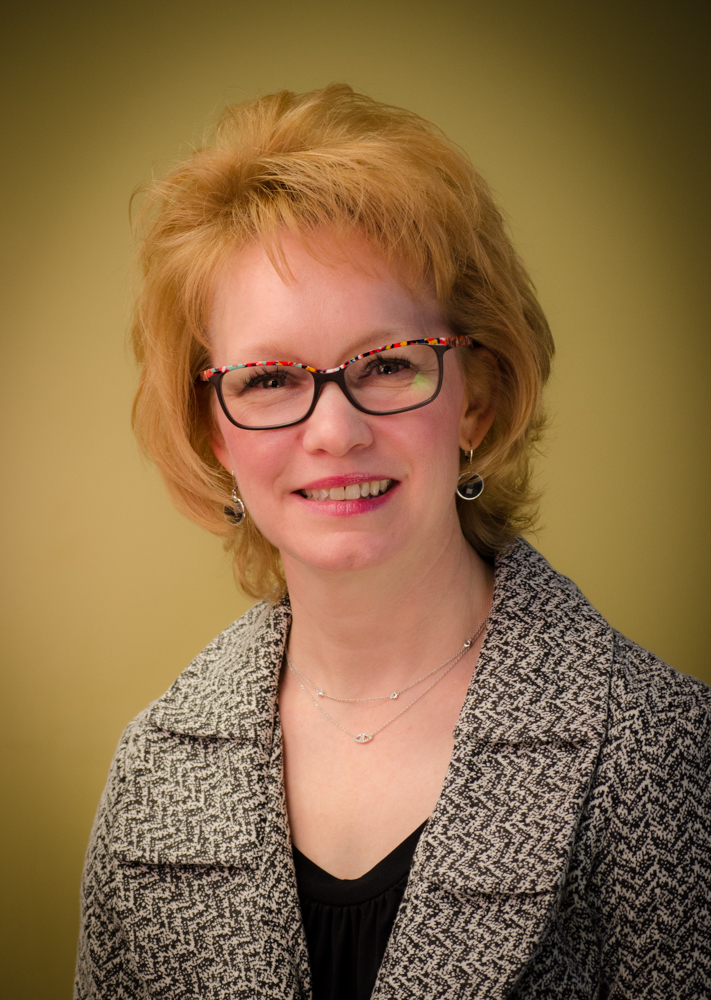
The Senior Segment
I’m Laura Miller, O.D., and I started Northwest Hills Eye Care in Austin, TX, 18 years ago. Two of the O.D.s in the practice see mostly younger families, and two of us focus more on older patients, especially those with low vision.
Overall, about 40% of patients in the practice are 65 or over. Among my own patients, it’s a lot higher. In the low vision arena, over 70% are in that older age bracket.
SCHEDULING CHALLENGES
Staff members may get behind when dealing with a senior. That requires a special kind of patience and understanding that, in these situations, it’s OK to spend more time.
It can be hard to balance, but the good news is that this population tends to show up early for appointments. That can sometimes give us a bit of a head start, though we still know we may not actually finish the prelim, for example, until after the scheduled time.
Especially in low vision, it’s sometimes 10% doing the exam and 90% talking about things like daily living or simply explaining what they don’t remember from other visits plus what the other doctors they’ve seen didn’t discuss.
PRACTICAL ISSUES
There are lots of things you don’t necessarily think of until you’re seeing patients. For example, we originally had nice chairs at dispensing, but they didn’t have arms. The probem? Patients didn’t have anything to balance on to get out from the table. That’s one thing I hadn’t thought of, and we replaced those very quickly.
We have come up with two seating areas. One is very close to my check-in area and good for people who have trouble moving. The other much larger one is further back.
We also make sure that there is high contrast on everything. For example, my walls are light, my doorways are dark. Another lesson learned? The flooring is laminate because we have so many walkers and wheelchairs. That should be a consideration.
EXAM TIPS
How we communicate and record depends on the patient’s cognitive level. A lot are quicker than I am, but if there is a history of stroke or early dementia, we will write things down. We have a dry erase that I use during the exam and a separate sheet where I circle what we talked about and where I can make notes about what we recommend. We can scan that into their record and also make a copy for them to take.
This can help family or caregivers if the patient shares it, and, if one is at the appointment, they are invited back into the exam room as well. I will ask permission and then document in the chart that I did so.

PRESCRIPTION CHANGES
I talk about what we’re doing and why. If it’s something major like a prism, I may schedule them to come back to check how they’re doing, etc..
When the glasses are dispensed, the optician goes through everything again with the senior that we’ve discussed in the exam. Then, if it’s a big change, I may have them come back in about a month to verify that they are doing OK.
CARE COORDINATION
We work a lot with neuro and retina specialties. I also work with occupational therapists who will sometimes come with the patient so they can determine if this is part of the big picture for that stroke patient, for example. I had one lady recently who came in post-stroke, and I found she had very advanced diabetic retinopathy that no one had diagnosed.
The team approach among different specialties is great for patients with a lot of health issues. Sometimes, you just need to have that conversation about which problems are most important to treat first or next.
PRACTICE POINTERS
If you’re not embracing that older patient segment, you’re missing out on a lot of medical optometry. This can be fun and exciting to deal with, plus becoming part of their care team and getting the big picture is really beneficial.
On a personal level, the oldest patients often have amazing stories to share. For example, I had one 95-year-old man who served in three wars. There is so much history and learning about it is a real side benefit of working with this population.
Comments are closed.







